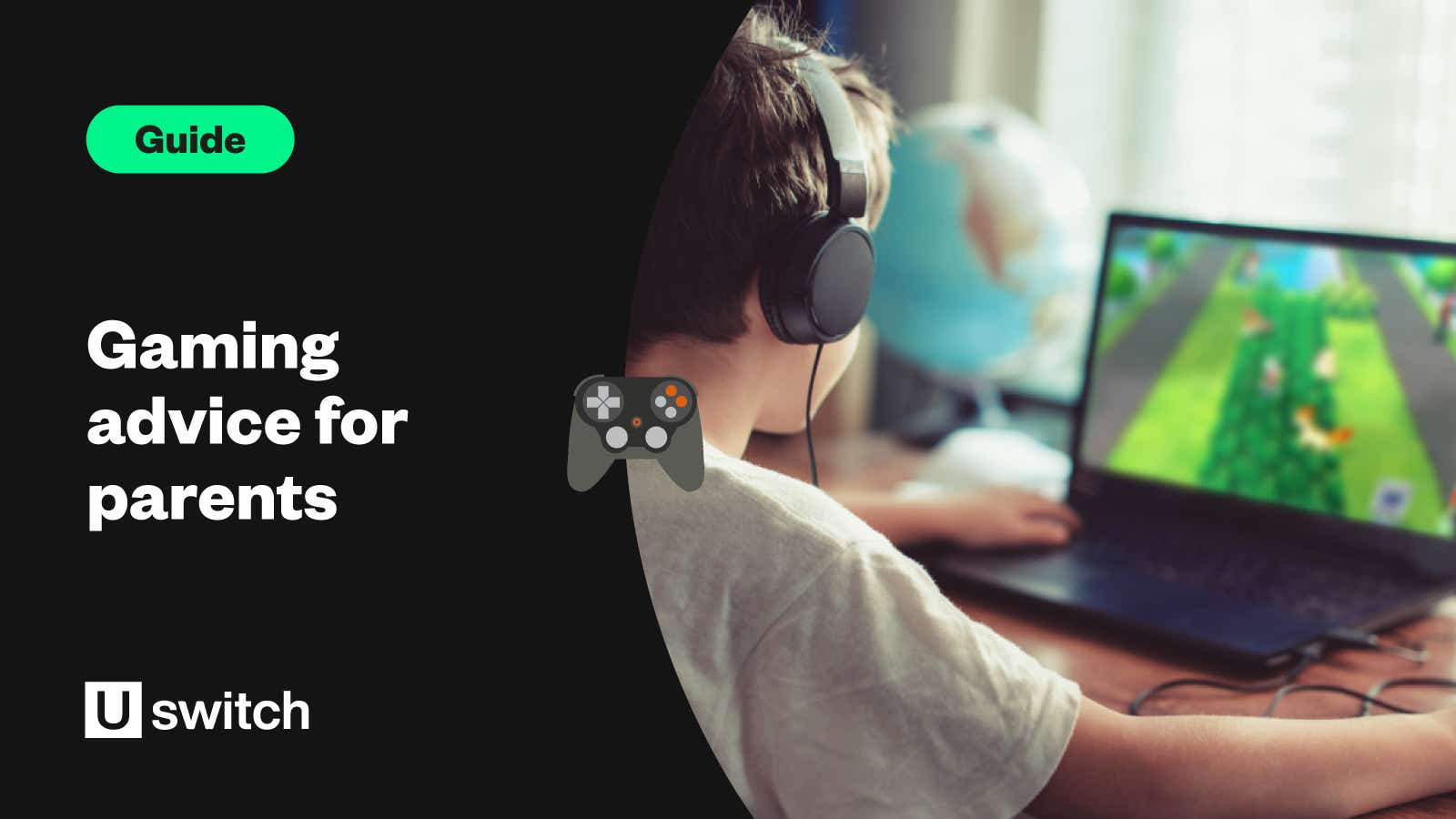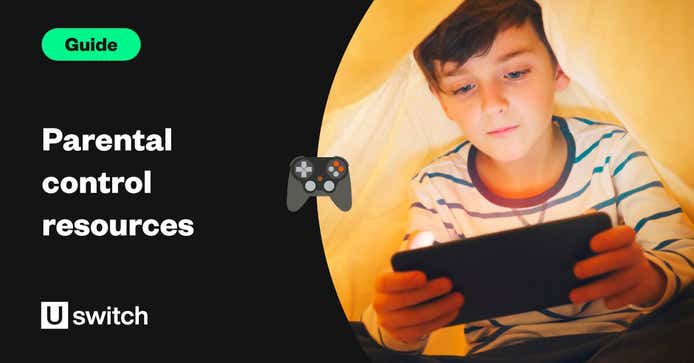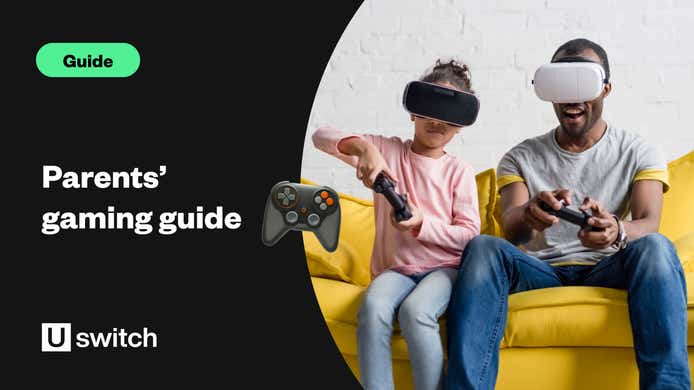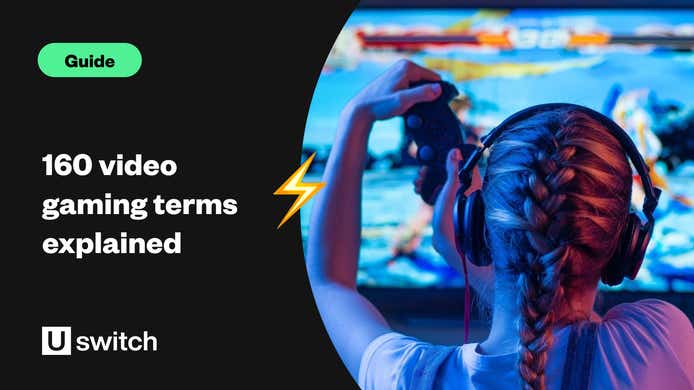As the gaming world evolves, online gaming has never been more popular. In fact, online gaming statistics show that 91% of youngsters aged between three and 15 play online games. For parents, online gaming can be a minefield.
Although there are genuine risks associated with online gaming, they can be negated through communication with your child and understanding parental control settings. To help you on this journey, we’ve collated the ultimate guide offering gaming advice for parents, featuring the risks of online gaming, knowing if a game is appropriate for your child, and ways to make gaming safe.
What are the risks of online gaming?
We’ve collated a list of the most common online gaming risks to give parents an idea of what to consider when their child is gaming online.
Bullying
For many young people, escaping into a digital world offers light relief from day-to-day life. Anonymity allows people to be whoever they want and, in theory, keep privacy at bay. However, some gamers take advantage of this, which, in some cases, can result in cyberbullying.
This is particularly the case when a child may not be as good at the game as other players or don’t have the latest skins or packs. This not only affects your child’s relationship with gaming but also their overall mood.
Trolling
Trolling is where players go out of their way to deliberately attack other players in a game. Trolls do this not just to torment fellow players but also to encourage them to quit. This sucks the enjoyment out of the game for gamers, often leaving victims upset and frustrated.
Verbal trolling is one of the most common examples, where trolls use an in-game chat to provoke other players. This may include:
Trash-talking - i.e. putting others down.
Flaming - i.e. insulting, swearing or using other offensive language.
Griefing
Griefing is when a player deliberately harasses or tries to aggravate other players during a multiplayer game, acting against server rules or community guidelines. Unfortunately, this kind of gaming behaviour is hard to prevent.
It is most prevalent in games like Minecraft, where players actively build and create, such as destroying buildings with a hammer or fire and ruining a gamer’s hard work in seconds.
Scams
Scamming in gaming is when an individual cheats a player out of something—often money. Common gaming scams to look out for include fake gaming websites that promise free games or extra in-game currency in exchange for personal details (i.e. login details or banking information).
The primary motivation for scamming is to access other gamers' accounts and steal private information, such as credit card details, game upgrades, and in-game purchases.
Learn more about different gaming terms, words and slang in our gaming glossary.
Microtransactions (otherwise known as In-game purchases)
In-game purchases, also known as microtransactions, are one of many ways game developers earn money—especially for free games such as Fortnite, Fall Guys, and Rocket League. To enhance gameplay, players have to pay to unlock new game modes, characters, or even materials.
These are categorised as:
Consumables: Products that can only be used once, such as lives or hints.
Non-consumables: Products with no expiration date, such as unlocking a new level or upgrading a character/vehicle.
Auto-renewal subscriptions: Charges that occur regularly (e.g., monthly) and often enable premium features.
Non-auto-renewal subscriptions: Paid subscriptions for a fixed period (e.g., a year) and require gamers to renew manually.
If unchecked, children can end up spending a fortune on in-game purchases as they look to have the most up-to-date features to curb FOMO (fear of missing out). Setting up parental controls with restrictions on in-game purchases is vital to avoid racking up an eye-watering bill or setting a spending limit if it is allowed up to a certain amount.
Communication with strangers
Gaming online is a great way for children to play and socialise with their friends from the comfort of their own homes. But what can start as an innocent chat with friends can lead to communication with strangers whose intentions may not be good for a whole host of reasons.
This often isn’t a cause for concern, as players who are not friends cannot chat directly in most games. However, in-game chats—either via a group chat or privately—can expose children to:
Inappropriate content, including swearing or bullying (or being ‘griefed’).
Unwanted contact.
Being pressured into sharing personal information.
Scams.
Before purchasing a game, review its settings to see whether you can turn off or limit chat functions to prevent your child from chatting with strangers.
You may also be interested in our guide on how to keep your child safe on their smartphone.

Ways to make gaming safe for your child
Now that you know the issues to look out for, there are many ways you can tackle them. Fortunately, game designers are on your side with plenty of safety features to ensure your child can have a safe online gaming experience.
Change settings
All major game consoles have settings that can be changed to prevent children from harm when playing games online. This can include setting time limits to control how long your child can play games on a given day, as well as implementing contact limits to prevent them from speaking to strangers.
Some games also have individual settings to ensure they are more age-appropriate for children, such as turning off communication features or muting voice chat to help put parents’ minds at ease when their children are playing their games.
Set up parental controls
Improve your child’s online gaming safety by customising game and platform settings. Make use of privacy controls to limit messages and invites to friends only, set parental controls for playtime limits, and manage in-game purchases.
If you have concerns, you can familiarise yourself with these features and adjust them to fit your child’s evolving needs before they start playing the game.
Set clear boundaries
If you’re concerned your child might get carried away and end up gaming morning, noon and night, implementing clear gaming boundaries will be beneficial.
The American Academy of Pediatrics recommends that children over the age of six shouldn’t game for more than an hour on school days and more than two hours on weekends. It’s worth getting into a habit of setting limits, such as only allowing gaming once homework and chores are complete.
To avoid your child becoming dependent on online gaming, consider introducing your child to other fun and stimulating activities to do in their free time. Perhaps even one that you could do together, such as going to the cinema or playing sports.
Talk to your child about gaming
Regularly having open conversations with your child about their gaming and online interactions is key to understanding their online experiences. Approach these talks calmly, starting by asking them questions like:
Why they enjoy playing the games they play.
What they do when they’re gaming.
Who they are playing with.
What they are sharing.
The answers to these questions help you better understand what your child is doing when they are gaming, while also taking an interest in their games. By keeping these conversations part of your regular dialogue with your child, and explaining the associated risks of online games (such as scams), you are helping to keep everyone safe.

How to decide whether a game is age-appropriate for your child
The Video Standards Council Rating Board is the national video games regulator, and they rate video games using the PEGI (Pan European Game Information) rating system. This was created to inform people—particularly parents—about what is and isn’t suitable for different age groups.
The PEGI rating system is a good place to start when trying to figure out which games are appropriate. It not only includes age ratings, but it also specifies what content can be found in the game via content descriptors. These help people to identify what content is in a game at a glance and include bad language, fear, and in-game purchases—all of which you wouldn’t want a young child to experience.
Read our comprehensive guide to learn more about the PEGI rating system.
Aside from PEGI ratings, here are some other ways to determine whether a game is suitable for your child:
Read reviews from other parents
Rather than reading game reviews, which will be biased, utilise social media to read online gaming advice from parents in the same shoes as you. Parents often share experiences and advice in online groups and forums, offering perspectives on a game’s content and its impact on their child.
This information will help you make an informed decision and connect you with a supportive community for navigating online gaming challenges.
Observe behavioural changes
Closely observe any changes in behaviour that may arise from playing the game. Noticeable shifts in mood, such as increased aggression, withdrawal from social interactions, or a decline in academic performance, can be red flags. These behavioural changes might indicate that the game’s content or the competitive nature of online interactions is impacting your child negatively.
Monitoring your child’s mood before and after gaming sessions can provide valuable insights into how the game affects them, helping you decide whether it’s suitable for their well-being.
It’s important to maintain open communication, encouraging your child to express how the game makes them feel and any discomfort it may cause. This proactive approach allows you to address potential issues early and adjust your choices accordingly.
Our game guide for parents offers insights and potential risks associated with the most popular online games for kids, from Roblox to Fortnite.
FAQs about online gaming
What is a gaming addiction?
Gaming addiction, or gaming disorder, is characterised by a pattern of persistent or recurring gaming behaviour that becomes so extensive it takes precedence over other interests and daily activities. For a child with a gaming disorder, despite the negative consequences, they will continue to game excessively, leading to significant issues for their family life and education.
Treating gaming addiction requires a multi-faceted approach, which might include individual or group therapy, lifestyle changes, or medication.
How many hours of gaming are healthy a day?
Ultimately, it depends on your child's age. As a general guide:
Toddlers aged two to three: Minimal to no gaming time, and parents should prioritise physical play and storytelling.
Children aged four to five: One hour of high-quality educational content.
Children aged six and older: One hour on weekdays and two hours on weekends is a healthy target.
At what age should a child play video games?
The appropriate age for children to start playing video games is generally considered to be around three to five years old, focusing on educational and age-appropriate content with strict limits on screen time.
When introducing digital games, you should ensure the content is beneficial and does not interfere with developmental needs such as physical activity, social interaction, or sleep.
Why are video games healthy?
Video games offer several benefits for children when played in moderation and with appropriate content. They can enhance cognitive skills such as problem-solving, strategic thinking, and spatial awareness.
Educational games can also support academic skills, including reading, maths and science, and encourage teamwork and clear communication.







